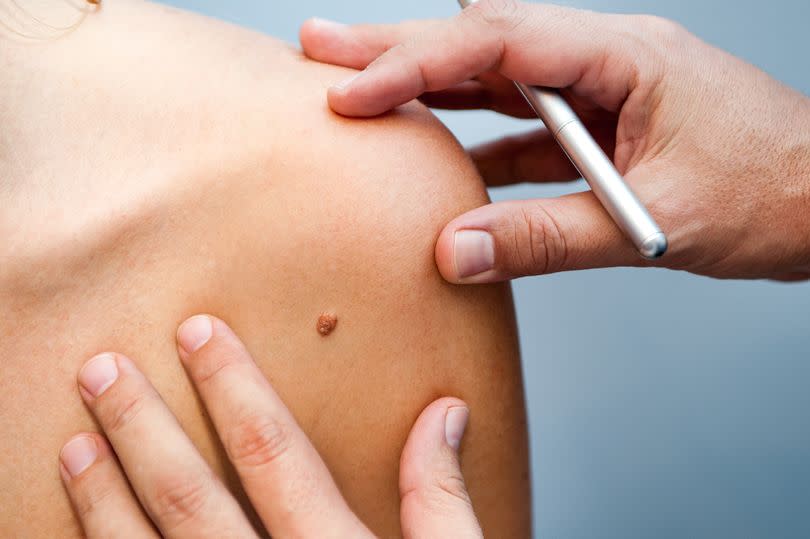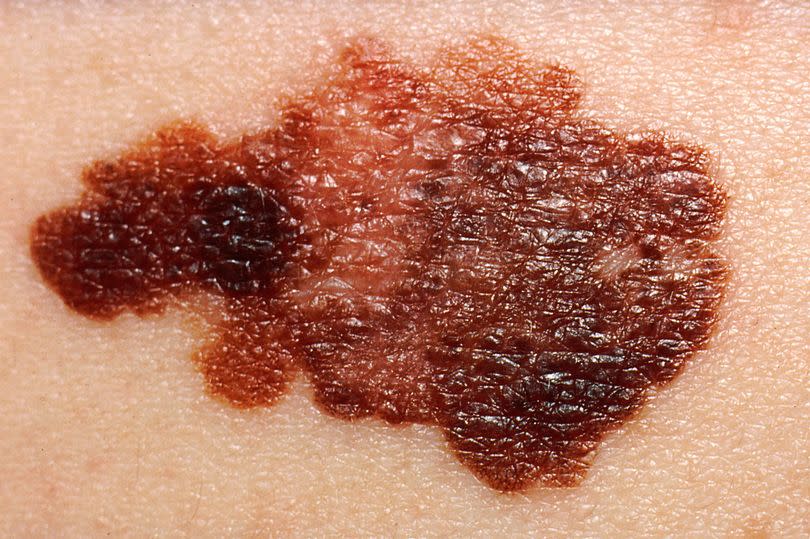Five 'red flag' signs for cancerous moles – and when to really worry

Throughout our lives, we typically sport between 10 to 40 moles in a variety of quirky shapes and sizes, say skin experts.
Yet, distinguishing the benign from the potentially lethal is tricky, especially with melanoma skin cancer claiming over 2,000 lives annually in the UK. To help, two doctors highlighted key warning signs on your skin that should prompt a medical consultation.
Dr Sooj, an NHS GP and A&E responder, recently took to TikTok to explain the 'ABCDE' checklist, a good starting point for anyone worried about their moles. "Moles are small coloured spots on your skin," he said in a clip on his @doctorsooj page.
"You may have a new mole on your skin or notice a change in an existing mole, it's most likely nothing to worry about, but here are the signs of melanoma which is a type of skin cancer."
The checklist starts with 'A' for asymmetrical. Melanomas often display an irregular shape or have 'two very different halves' in terms of colour and texture.
Next is 'B' for border, where melanomas typically exhibit a jagged edge, while 'C' stands for colour, often presenting a mix of brown, black, red, or pink.

Dr Sooj continued: "D stands for diameter - melanomas are usually more than six millimetres wide. Six millimetres is about the same size as a pencil rubber. [Finally,] E stands for evolving. A mole that changes shape, size or colour or bleeds or itches or becomes crusty, is more likely to be a melanoma."
Chiming into the conversation, Dr Gareth Nye, a senior lecturer at Chester Medical School, also told The Mirror they generally spring up in areas most exposed to the sun. However, nowhere is 'immune' from melanomas - even your genitalia - so it's important to check yourself regularly.
"[This] include arms, legs, face and neck," Dr Nye explained. "Often missed areas of sun cream are also likely sites including the back and tops of feet... Cancerous moles normally have a change in colour to become darker, have a change in shape and become irregular, they may even bleed or become itchy.
"The difficulty is in the range of normal and abnormal and so if you notice a new mole or a change in an old mole it's always worth checking. Pregnancy can cause changes in moles as well but even so it's worth getting them checked."
Aside from heading to the GP, Dr Sooj also advises people to track changes in their moles using a phone camera or asking a loved one for their second opinion. But, in no circumstances, should anyone attempt to remove a mole themselves.
Dr Nye added: "You should never remove moles at home. You increase your risk of infection massively and can cause a permanent scar. If the mole is cancerous, you are not removing the underlying cancerous cells and can end up re-growing a new mole, or the cancer can spread to other areas of the body.
"You should keep an eye on moles and when you see a GP you should have to hand information about when it first appeared, what it looked like, how it's changed, how quickly has it changed. Pictures are always handy to have to better show a GP the changes."
What do you think? Let us know in the comment section below

 Yahoo News
Yahoo News 
